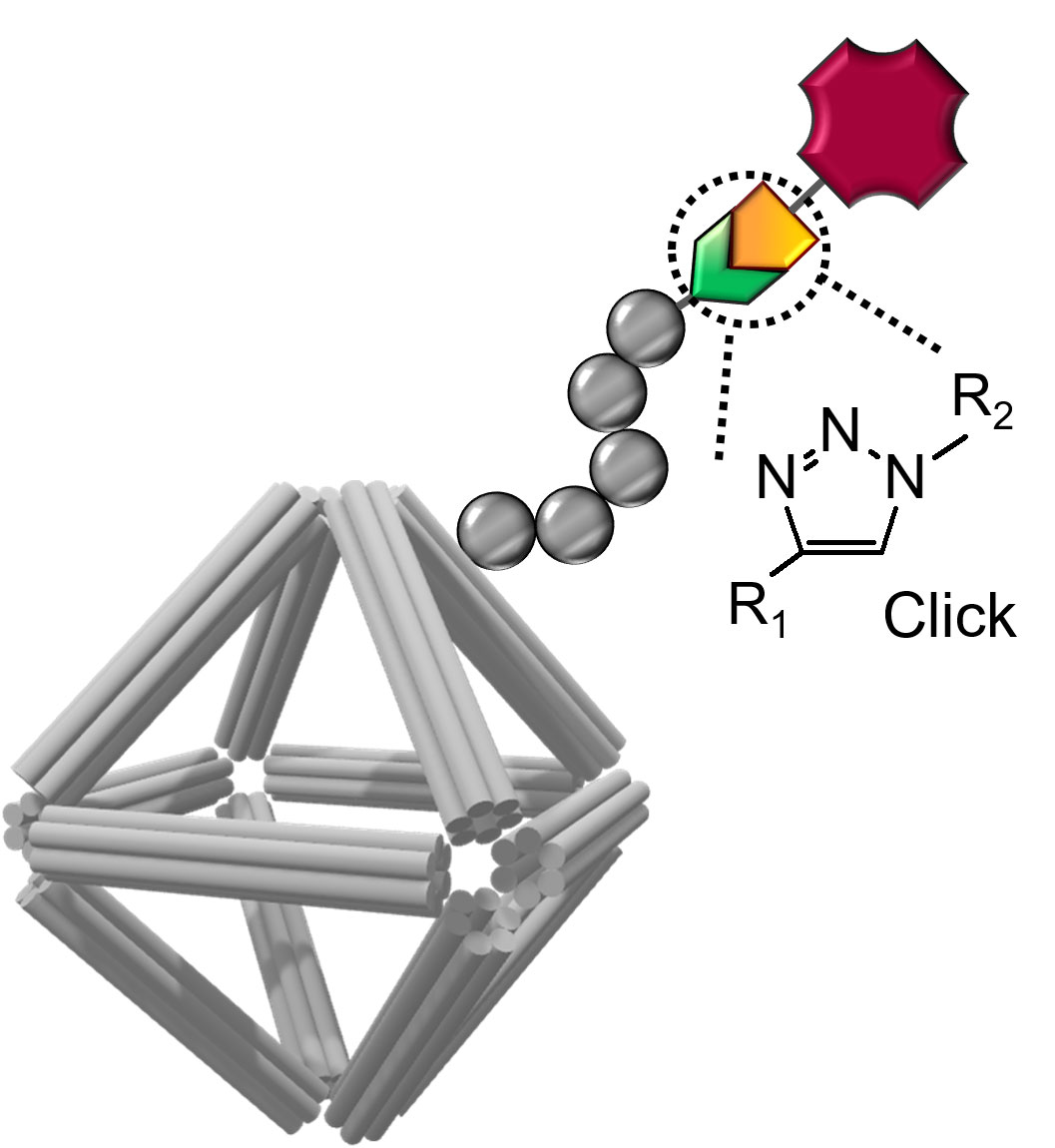Fighting Cancer with DNA Origami
A new approach to functional and physiologically stable DNA origami for biomedical applications

The Science
Scientists have devised a new way to build nanomaterials that can maintain their structural integrity and functionality in ways relevant to drug delivery. The team developed a class of molecular coatings that are compatible with biological environments. The researchers then used these coating to stabilize wireframed DNA origami cages. DNA origami is a nanoscience method for folding DNA to create two- and three-dimensional shapes. The new coatings preserve the structural stability of the DNA cages in biological applications. In a series of lab demonstrations, the researchers showed important benefits. It can carry an anticancer drug with a slower release of the medicine over time than possible with the noncoated counterpart. The coatings also make the surface of the cage support targeted drug delivery.
The Impact
DNA nanotechnology is a toolkit for creating programmable nanostructures. These have great potential for biomedical applications. However, these materials do not have the needed structural integrity when used in complex biological fluids. The new coatings could overcome this challenge. This would make DNA origami useful for drug delivery, bioimaging, and cellular targeting.
Summary
DNA nanotechnology has established approaches for designing programmable and precisely controlled nanoscale architectures through specific Watson−Crick base-pairing, molecular plasticity, and intermolecular connectivity. Superior control over DNA origami structures could be beneficial for biomedical applications, including biosensing, in vivo imaging, and drug and gene delivery. However, maintaining the integrity of DNA origami structures in complex biological fluids remains a major challenge for enabling these applications. In this study, researchers developed structurally well-defined peptoids—a class of bio-inspired synthetic polymers—to protect DNA origamis in ionic and bioactive conditions. They systematically explored the effects of peptoid architecture and sequence dependency on DNA origami stability. The researchers showed that octahedral DNA origami coated with certain designed peptoids can be used as carriers for anticancer drugs and proteins, with the peptoid modulating the rate of drug release and prolonging protein stability against proteolytic hydrolysis. Finally, they designed two alkyne-modified peptoids to conjugate with fluorophores and antibodies to equip stable DNA origamis with imaging and cell-targeting capabilities. The results demonstrate an approach toward functional and physiologically stable DNA origami for biomedical applications. The study involved no human or animal testing.
Contact
Shih-Ting (Christine) Wang
Center for Functional Nanomaterials, Brookhaven National Laboratory
shihwang@bnl.gov
Funding
This research used resources of three Department of Energy Office of Science user facilities: the Center for Functional Nanomaterials and National Synchrotron Light Source II at Brookhaven National Laboratory and the Molecular Foundry at Lawrence Berkeley National Laboratory. This work was also supported by a Brookhaven Laboratory Directed Research and Development grant. The DNA origami work was supported by the DOE Office of Science, Office of Basic Energy Sciences, Division of Materials Sciences and Engineering. The LiX beamline at NSLS-II is part of the Life Science Biomedical Technology Research resource, cofunded by the National Institute of General Medical Sciences and the DOE Office of Biological and Environmental Research Grant, with additional support from the National Institutes of Health. Simulations were supported by computational resources provided by the Australian Government through National Computational Infrastructure Project e90 under the National Computational Merit Allocation Scheme.
Publications
Wang, S.–T., et al., DNA Origami Protection and Molecular Interfacing through Engineered Sequence-Defined Peptoids, Proceedings of the National Academy of Sciences of the United States of America 117, 6339 (2020). [DOI: 10.1073/pnas.1919749117]
Related Links
European Pharmaceutical Review: Anti-cancer drug delivery: peptoid-coated DNA origami
BNL newsroom: Protecting DNA Origami for Anti-Cancer Drug Delivery
Molecular Foundry news: A peptoid coat keeps these DNA origami structures safe — so they can save you.
Highlight Categories
Program: BER , BES , MSE , SUF
Performer: University , SC User Facilities , BES User Facilities , NSLS-II , CFN , Foundry
Additional: Collaborations , Non-DOE Interagency Collaboration , International Collaboration



